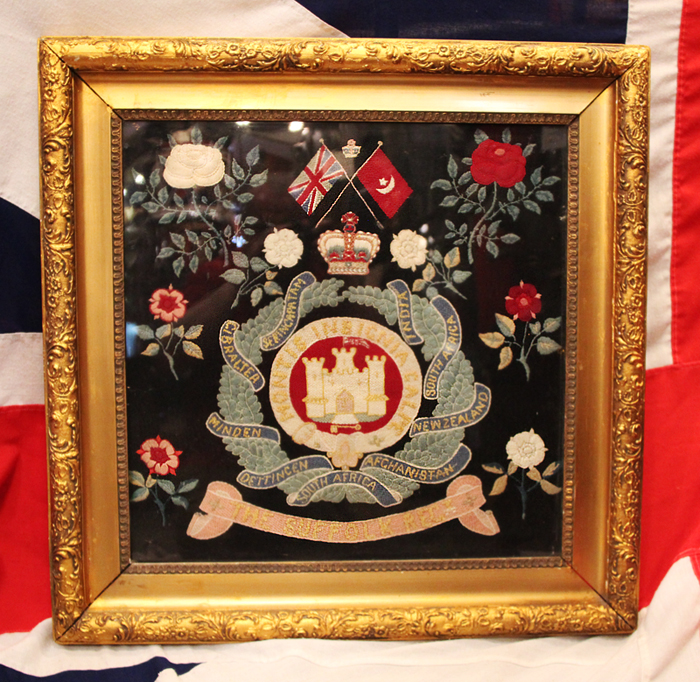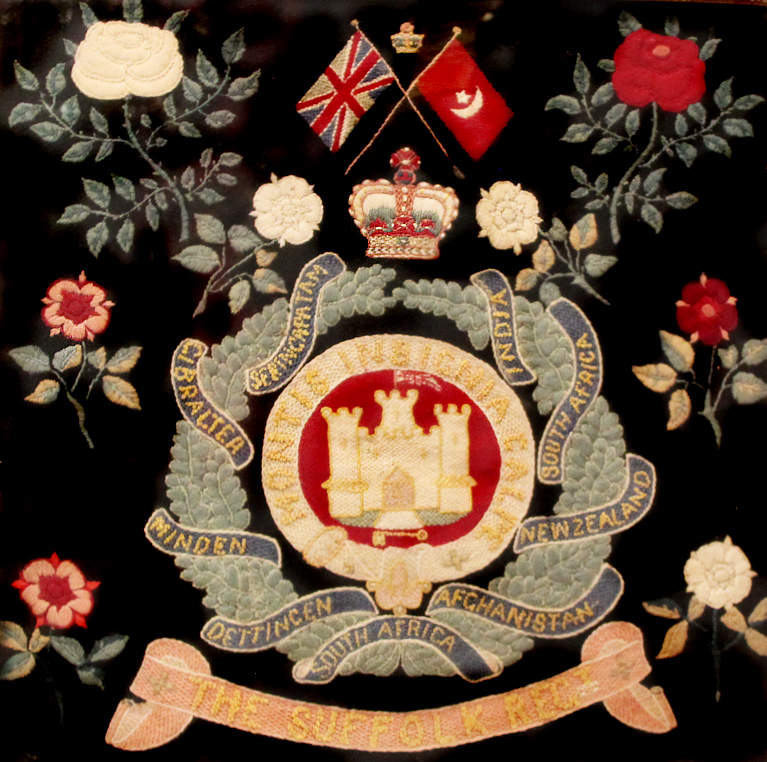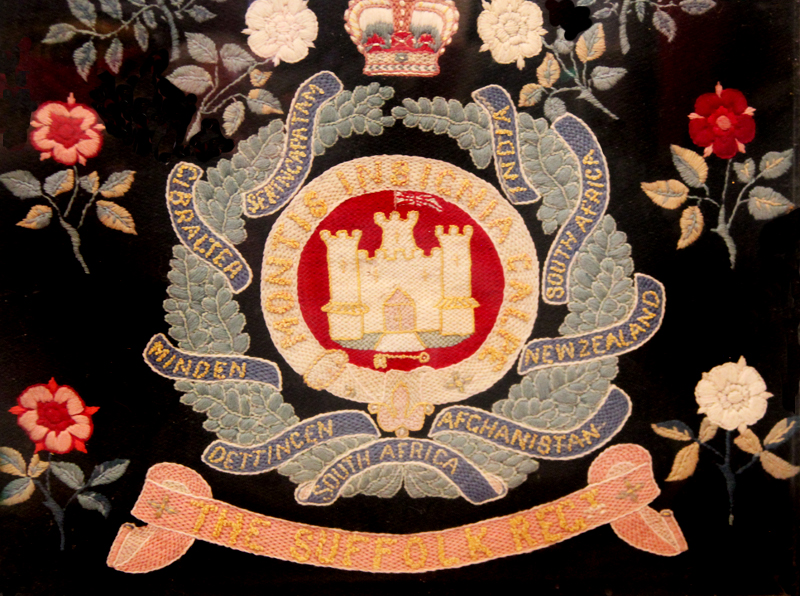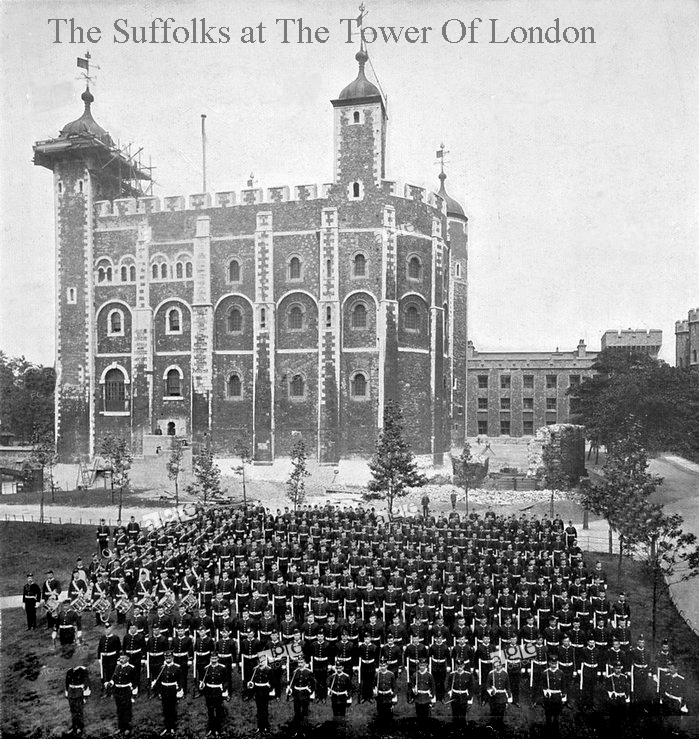A Fabulous Original Victorian Woolwork Regimental Crest of the Suffolk Regt In Still Highly Vividly Embroidered Colours, and Superbly Executed With Great Skill. With Scrolls of the Regiment's Battle Honours, From Dettingen Up To The South African Wars
Bearing the regiments crest surmounted with Queen Victoria's crown. Very unusually is it surmounted with a Union Flag and a Moon and Crescent flag of Egypt. In a gesso mounted gilt wooden framed. Members of the Suffolks were based in Egypt from - 17 December, 1889 - to 10 February, 1891. The 1st Battalion served in the Second Boer War: it assaulted a hill near Colesberg in January 1900 and suffered many casualties including the commanding officer.
Between 1895 and 1914, the 2nd Battalion, Suffolk Regiment was stationed for the majority of the time in India. Garrison postings during this period include; Secunderabad (India) 1895, Rangoon and the Andaman Islands (Burma) 1896 to 1899, Quetta (North West Frontier) 1899 to 1902, Karachi and Hyderabad (Northern India, now Pakistan) 1902 to 1905, Madras (India) 1905 to 1907, Aden 1907, returning to England in 1908.
During its service in India the 2nd Battalion became known as a "well officered battalion that compared favourably with the best battalion in the service having the nicest possible feeling amongst all ranks". The 2nd was also regarded as a good shooting battalion with high level of musketry skills.
The spirit of independence and self-reliance exhibited by officers and non-commissioned officers led to the 2nd Battalion taking first place in the Quetta Division of the British Army of India, from a military effectiveness point of view, in a six-day test. This test saw the men under arms for over 12 hours a day conducting a wide selection of military manoeuvres, including bridge building, retreats under fire, forced marches and defending ground and fixed fortifications.
The 1st Battalion landed at Le Havre as part of the 84th Brigade in the 28th Division in January 1915 for service on the Western Front and then transferred to Egypt in 24 October 1915.30 It suffered some 400 casualties at the Second Battle of Ypres in May 1915.
The 2nd Battalion landed at landed at Le Havre as part of the 14th Brigade in the 5th Division in August 1914. The value of the 2nd Battalion's 20 years of peacetime training was exemplified at the Battle of Le Cateau on 26 August 1914, a mere 23 days since Britain had declared war on Germany. In this action the 2nd Battalion undertook a fierce rear-guard defence out-manned and out-gunned by superior numbers of enemy. The 2nd Battalion held their defensive position despite losing their commanding officer, Lt. Col. C.A.H. Brett DSO, at the commencement of the action and their second in command, Maj. E.C. Doughty, who was severely wounded after six hours of battle as he went forward to take ammunition to the hard-pressed battalion machine gunners.
Almost totally decimated as a fighting unit after over eight hours of incessant fighting, the 2nd Battalion, Suffolk Regiment was gradually outflanked but would still not surrender. This was despite the fact that the German Army, knowing the 2nd Battalion had no hope of survival, entreated them to surrender, even ordering the German buglers to sound the British Cease Fire and gesticulating for the men of the 2nd to lay down their arms. At length an overwhelming force rushed the 2nd Battalion from the rear, bringing down all resistance and the 2nd's defence of Le Cateau was at an end. Those remaining alive were taken captive by the Germans, spending the next four years as prisoners of war and not returning home until Christmas Day 1918
Code: 21639
650.00 GBP




